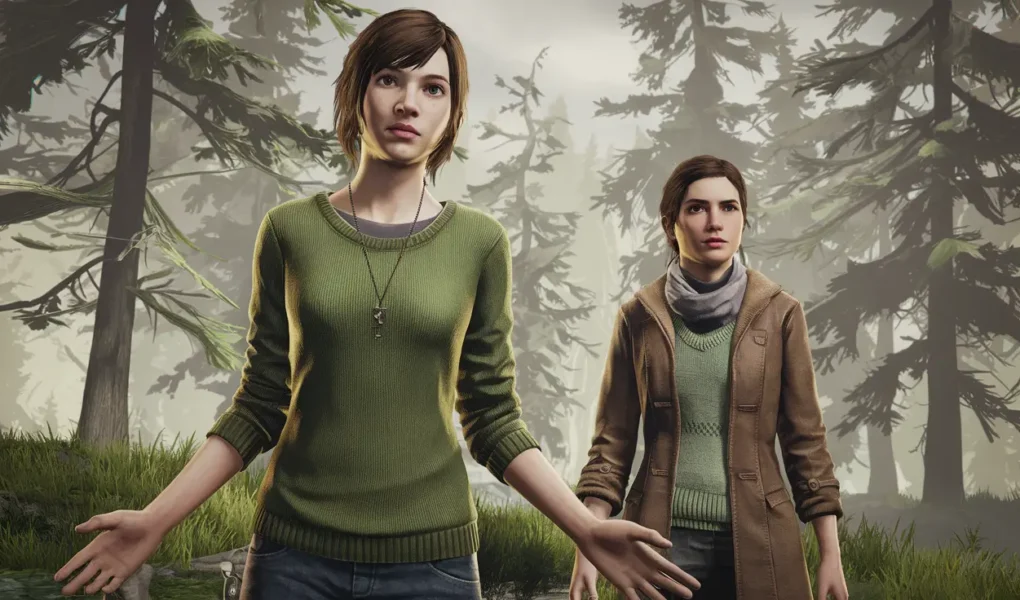The world of fan art is vast and diverse. It allows fans to creatively express their admiration for games, movies, and TV shows. “Life is Strange,” an episodic adventure game developed by Dontnod Entertainment, has captivated a massive fanbase since its release. With its rich storytelling and deep emotional connections, fans have taken to expressing their creativity through art, fiction, and other forms. However, one part of this fan art has generated controversy: the “R34” phenomenon.
“R34,” short for “Rule 34,” is an internet rule that states: “If it exists, there is porn of it—no exceptions.” This concept applies to nearly all fandoms, including “Life is Strange.” In this article, we explore the R34 phenomenon surrounding “Life is Strange” and its impact on the artistic evolution of fan culture.
What is Rule 34?
Before diving into the specifics of “Life is Strange” and its relation to R34, it’s essential to understand what Rule 34 entails. Rule 34 is not an actual law, but rather an internet maxim born out of meme culture. It suggests that any character, item, or situation from media can and will be sexualized by someone online.
While some may see Rule 34 as harmless fun, others view it as problematic, particularly when it involves characters from more innocent or emotionally-driven narratives, like “Life is Strange.” Fans often feel conflicted between artistic freedom and respecting the original work.
The Appeal of “Life is Strange”
“Life is Strange” is known for its intricate character development and emotional storytelling. The game revolves around Max Caulfield, a teenager who discovers she has the ability to rewind time. The plot covers deep themes like friendship, mental health, trauma, and loss. These emotionally rich themes have drawn many fans into the world of “Life is Strange,” and it’s no surprise that fan art quickly followed.
The connection between fans and the characters in “Life is Strange” is intense. Max, Chloe, and other key characters resonate with players on a personal level. As a result, fan art communities have flourished, creating drawings, animations, and stories that celebrate the game’s emotional depth.
Enter R34: The Controversial Side of Fan Art
However, as with any popular media, “Life is Strange” has not escaped the reach of Rule 34. Some fans have created sexually explicit fan art featuring the game’s characters, leading to the inevitable question: is this form of expression appropriate, given the nature of the game?
There are a few reasons why R34 content has found its way into “Life is Strange” fan culture:
- Fan Ownership: Many fans feel a deep connection to the characters and storylines. They may create art that reflects their own desires or imaginations, regardless of the original intent of the creators.
- Curiosity: The anonymity of the internet allows people to explore topics they might not in real life. The R34 content often satisfies this curiosity in unconventional ways.
- Popularity: The more popular a game becomes, the more likely it is to attract Rule 34 content. “Life is Strange” has a massive fanbase, and with that comes a wider variety of fan creations, including NSFW (not safe for work) material.
The Ethical Debate
The existence of R34 content in the “Life is Strange” fandom has sparked ethical debates. Is it right to create explicit fan art of characters who are often depicted as young adults or teens? Is this form of fan expression a violation of the game’s intended emotional narrative?
Those who oppose R34 content argue that it objectifies characters meant to be portrayed as real, emotionally complex individuals. For many, seeing explicit versions of Max or Chloe can feel jarring, considering the seriousness of the themes in the game, such as grief, mental health, and trauma.
On the other hand, supporters of R34 content argue that fan art, no matter its form, is a part of the broader expression within fan communities. They see it as an outlet for creativity and freedom. Fans argue that separating the game’s characters from the game’s context allows them to be used in various forms of art without disrespecting the original work.
How R34 Impacts the “Life is Strange” Community
The presence of R34 content in the “Life is Strange” community has had a mixed impact. For some fans, it’s simply an element of fan culture that can be ignored or avoided. For others, it presents a dilemma—particularly for younger fans or those who feel a strong emotional attachment to the game.
The rise of R34 in “Life is Strange” has led to the creation of separate fan spaces. Some platforms embrace more explicit content, while others have strict rules to prevent it from surfacing. This separation has helped keep the fanbase somewhat united, though it has also created tension within the community.
The Evolution of Fan Art in “Life is Strange”
Beyond R34 content, the “Life is Strange” fan art community has evolved into a thriving space for creativity and artistic expression. Whether through traditional art, digital paintings, animations, or fan fiction, fans continue to explore the emotional depth of the game.
Fan art plays an essential role in keeping the fandom alive long after the game’s release. It allows fans to expand upon the storylines, reimagine scenes, and even create alternative endings. The ability of fan art to bring players closer to the characters and story is a testament to the powerful emotional impact “Life is Strange” has had on its audience.
Fan Art as a Form of Therapy
Interestingly, some fans see creating art—R34 or otherwise—as a form of therapy. “Life is Strange” deals with heavy themes such as death, depression, and difficult choices. Fans may use art as a way to process their own emotions, projecting their feelings onto characters like Max or Chloe. This can be a therapeutic outlet for fans dealing with similar real-life challenges.
Addressing the Developers’ Perspective
The developers of “Life is Strange” have not explicitly addressed the R34 content created by the fanbase. However, creators often find themselves in a tricky position when it comes to fan art. On the one hand, they appreciate the enthusiasm and creativity of their fans. On the other hand, they may be uncomfortable with seeing their characters in explicit contexts.
For game developers, the R34 phenomenon poses a dilemma. They want to encourage fan engagement, but they also want to protect the integrity of their characters and story. Navigating this balance is a challenge, especially in large and passionate fan communities.
The Future of “Life is Strange” Fan Culture
As “Life is Strange” continues to grow in popularity with new releases and spin-offs, its fan community will likely continue to expand. Fan art, including R34 content, will remain a significant part of this fandom. However, as the community evolves, it’s possible that new spaces and rules will emerge to address concerns and accommodate different preferences.
It’s essential for fans to respect each other’s boundaries and understand that not all forms of fan art are meant for everyone. While R34 content may have a place in certain corners of the internet, it’s important to recognize the difference between artistic freedom and respecting the original narrative’s themes.
Conclusion
The R34 phenomenon in the “Life is Strange” community highlights the complexities of fan culture and artistic expression. While some see it as a natural part of the fandom, others view it as a distortion of the game’s emotional depth. Ultimately, fan art—including R34—represents a wide range of creative outputs, driven by the fans’ connection to the game and its characters.
As the “Life is Strange” community grows, so too will the debates surrounding R34 content. Whether fans choose to engage with it or not, it’s clear that “Life is Strange” has left a lasting impact on its audience, inspiring creativity in all its forms.




